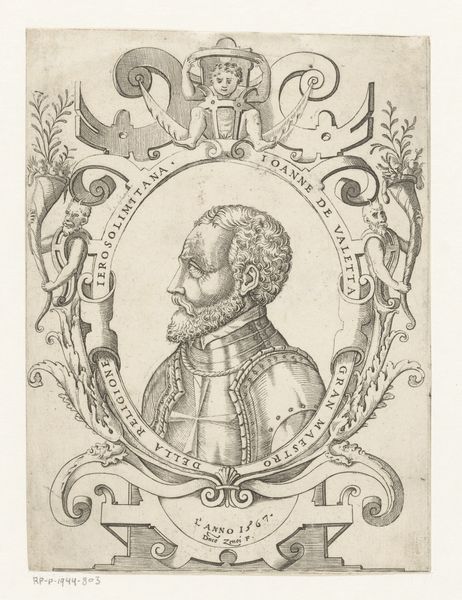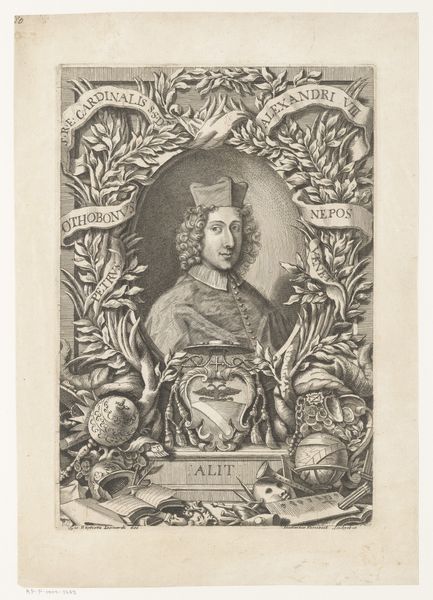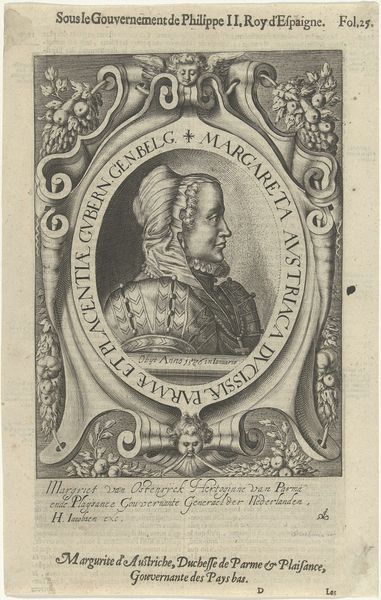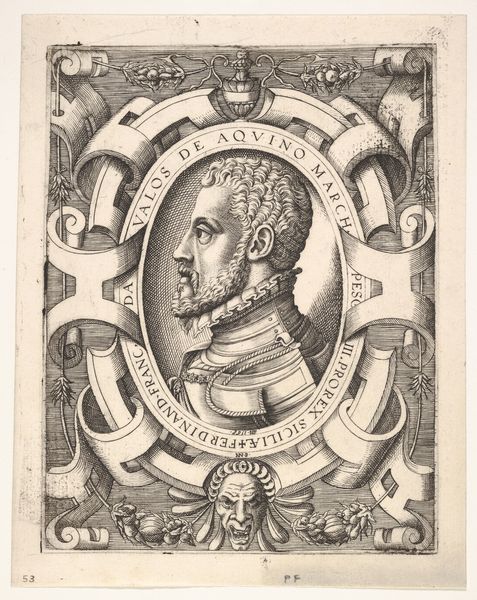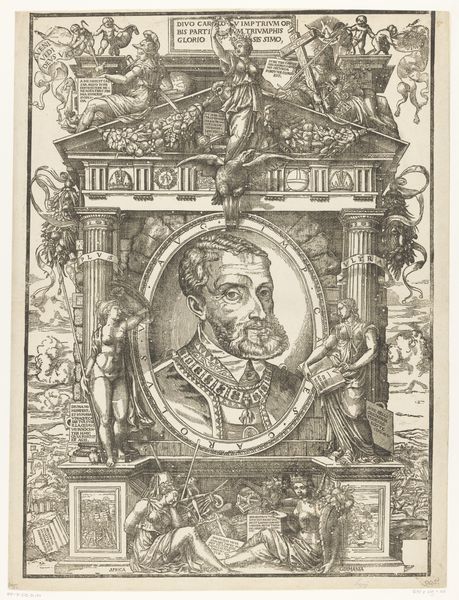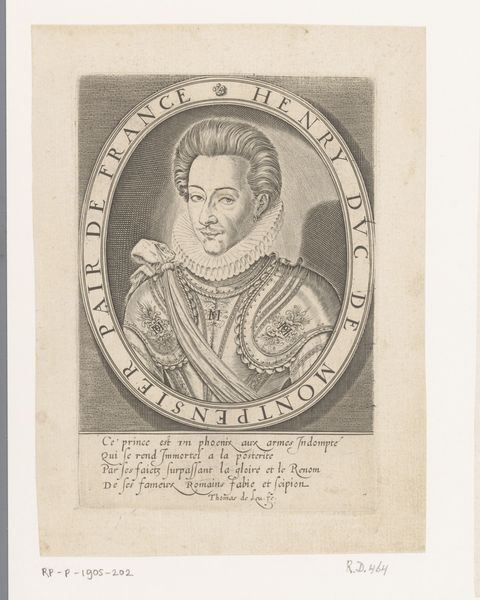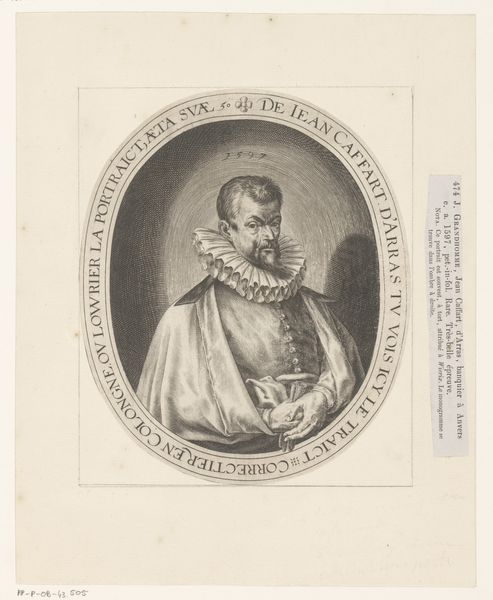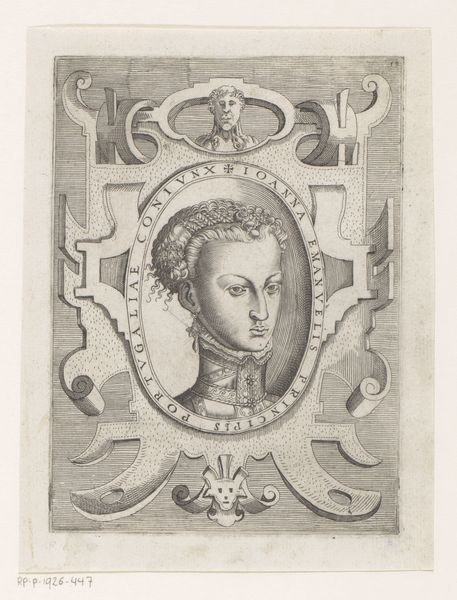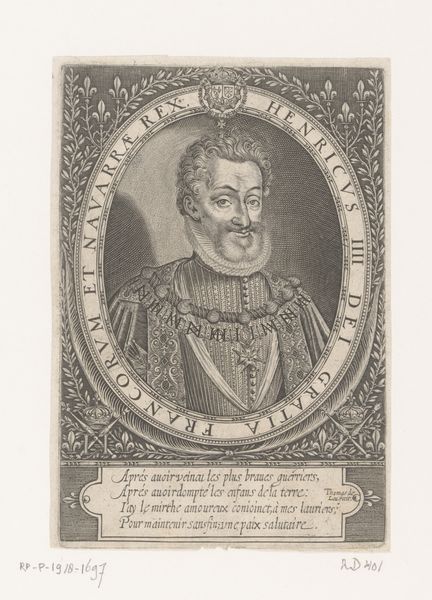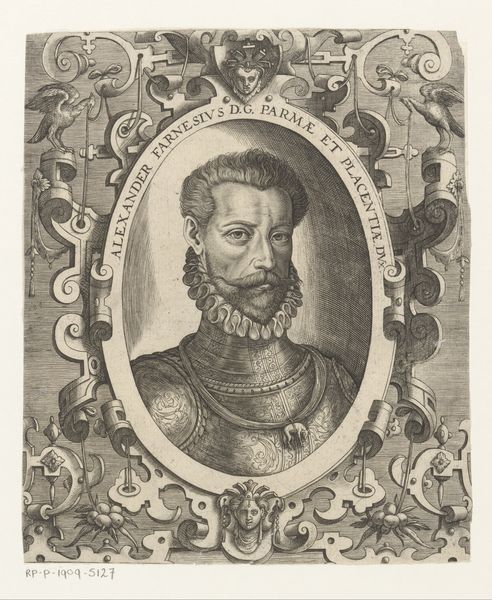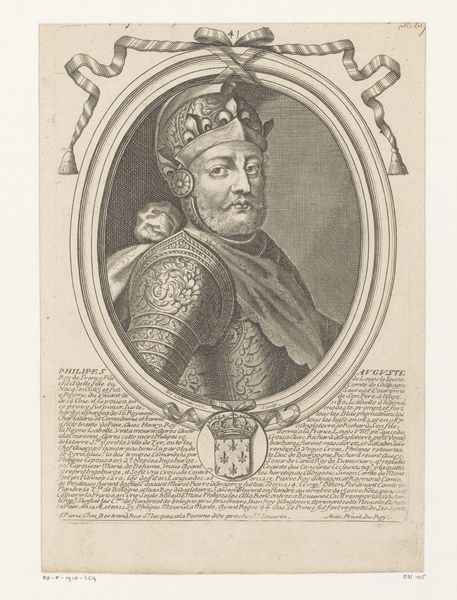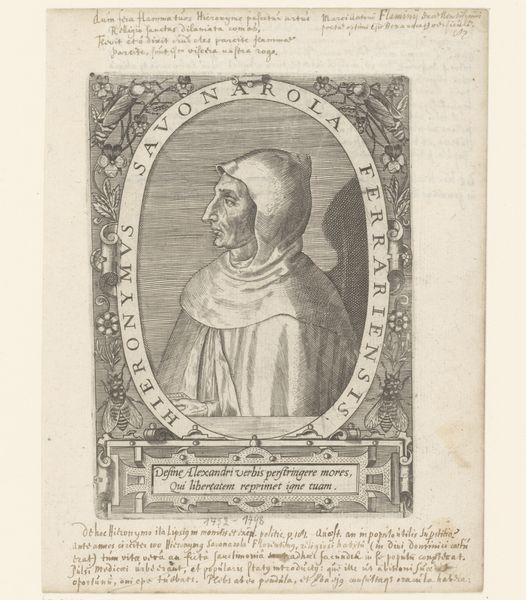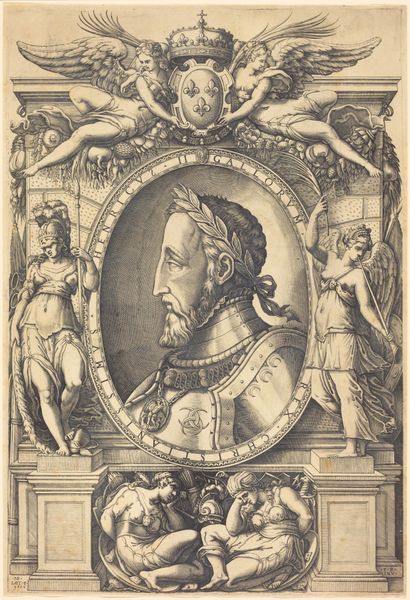
print, engraving
#
portrait
#
baroque
# print
#
old engraving style
#
engraving
Dimensions: height 121 mm, width 64 mm
Copyright: Rijks Museum: Open Domain
Editor: Here we have a 17th-century engraving titled "Portret van Hendrik IV in een ornamentele lijst," or "Portrait of Henry IV in an ornamental frame" by Monogrammist HB. I’m immediately struck by the almost claustrophobic detail of the frame around the central portrait, a stark contrast to the subject's regal but weary expression. What stands out to you in terms of how the visual language conveys something deeper? Curator: The image is rich in symbolism, a complex web that attempts to define and legitimize power. Notice how Henry’s likeness is enclosed within the oval, literally framed by ornate decoration. This decorative program doesn’t just provide context; it reinforces a constructed image of kingship. Look at the cherubic figure at the top and the grotesque masks below; do these suggest an idealized view, challenged by earthly realities? Editor: So the ornamental frame isn't just decorative, but actively shapes how we're meant to perceive Henry IV? I hadn't considered that. Curator: Precisely. The baroque period, with its love of ornate detail, uses it to create an emotional, even psychological, impact. The inscription around the oval is important too. How does that inscription function within the context of divine right? What memories of the past does this visual vocabulary try to evoke? Editor: Well, it includes "Dei Gratia," suggesting that he rules by the Grace of God... the composition tries to root his authority in religious sanction. It also emphasizes his claim to the Kingdoms of France and Navarre! Curator: Exactly. The engraving employs well-established tropes to reinforce legitimacy. What does the presence of both classical and religious imagery, mashed together, suggest about the king's perception of himself? Editor: It seems he wanted to appear not just powerful but divinely appointed, linking himself to enduring symbols of authority. I now notice how calculated every element appears. Thanks—it really opens up a new way of considering portraiture. Curator: Indeed. It reveals how even seemingly straightforward portraits participate in constructing lasting legacies, and how careful a ruler had to be to manage his public image.
Comments
No comments
Be the first to comment and join the conversation on the ultimate creative platform.

